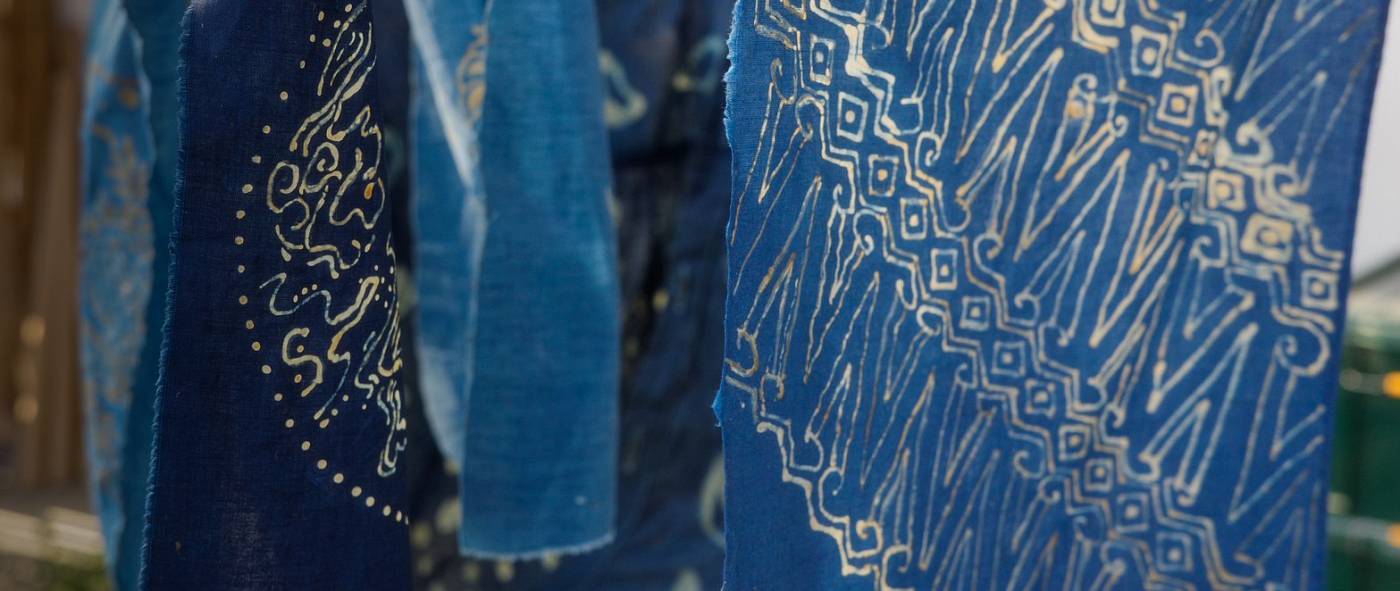
Meet Josie Cooke
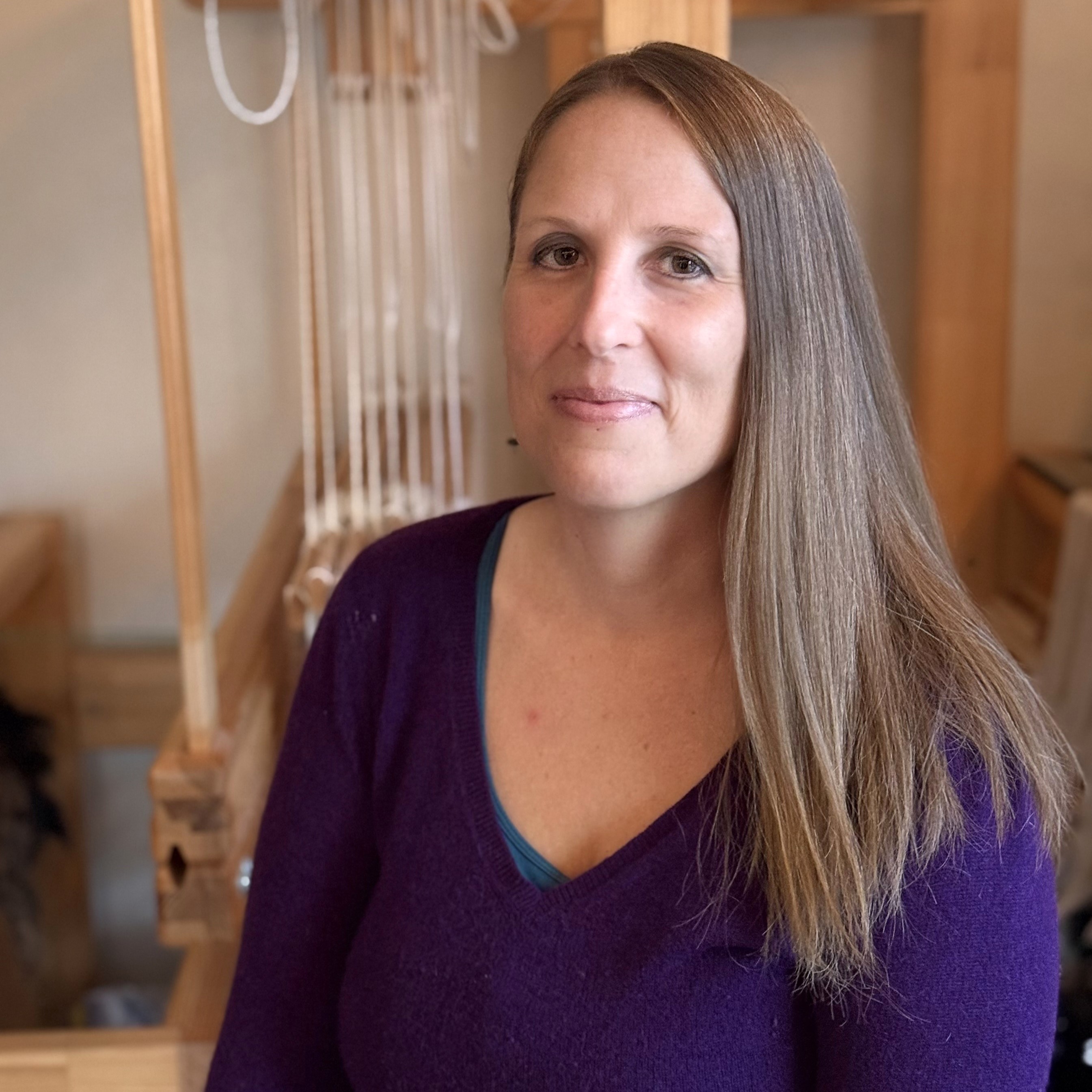
Meet Josie Cooke! In her first blog post as a Resident Artisan, Josie writes about the Slow Fashion Movement, and her work creating locally sourced, ecologically friendly, and ethically produced textiles.
Greetings! I’m Josie Cooke, a weaver, and one of the four new members of the Artisan Development Program. Originally from Michigan, I was a Craft Education Intern at North House in 2019, and have lived in Duluth since 2022. Having the opportunity to be in this residency is meaningful to me, part of my journey as a craftsperson and craft teacher.
At present, I make everything from finely woven dinner napkins to scarves, towels, and chunky wool rugs. In my weaving I use cotton, cotton-linen blends, wool, and hemp. I seek to emphasize materials in my work that are locally sourced, ecologically friendly, and ethically produced. This ethos is in line with the Slow Fashion Movement, which is a response to the waste, social injustice, and environmental harm that is inherent in fast fashion today.
Fibershed is one organization promoting this movement by creating local networks between shepherds, mills, and makers. By fostering local economies and encouraging environmentally minded practices, this organization seeks to create an alternative that is better for the people, the animals, and the land. What this means for my practice is buying wool from local shepherds/shepherdesses and having it made into yarn by local mills. You may think this will limit my options, but there is a surprising number of sheep farms around! Moreover, sheep grow a broad range of natural colors, and natural dyeing is also an option.
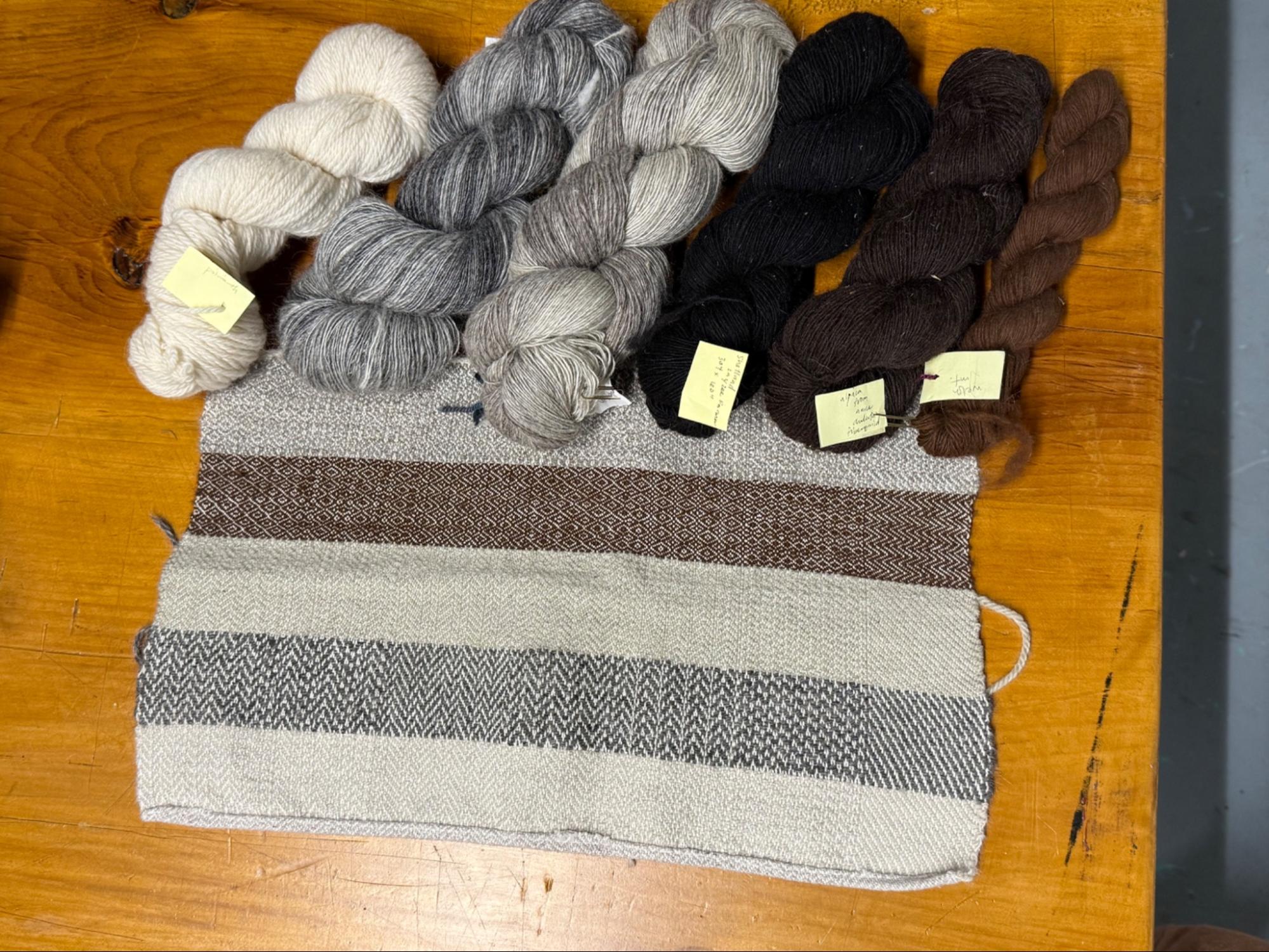 Handspun wool skeins and woven twill sampler using wool yarn
Handspun wool skeins and woven twill sampler using wool yarn
An area I plan to explore this year is weaving cloth for garments. In 2023, I participated in a sheep to sweater project to promote my local Fibershed. I sought out a variety of local sheep wools, washed and combed or carded them, used my spinning wheel to spin and ply them into yarn, and knit that yarn into a sweater. The experience was immensely empowering. A connection returned to me: a connection to my environment, the animals we co-exist with, and the land that sweater came from and will someday go back to.
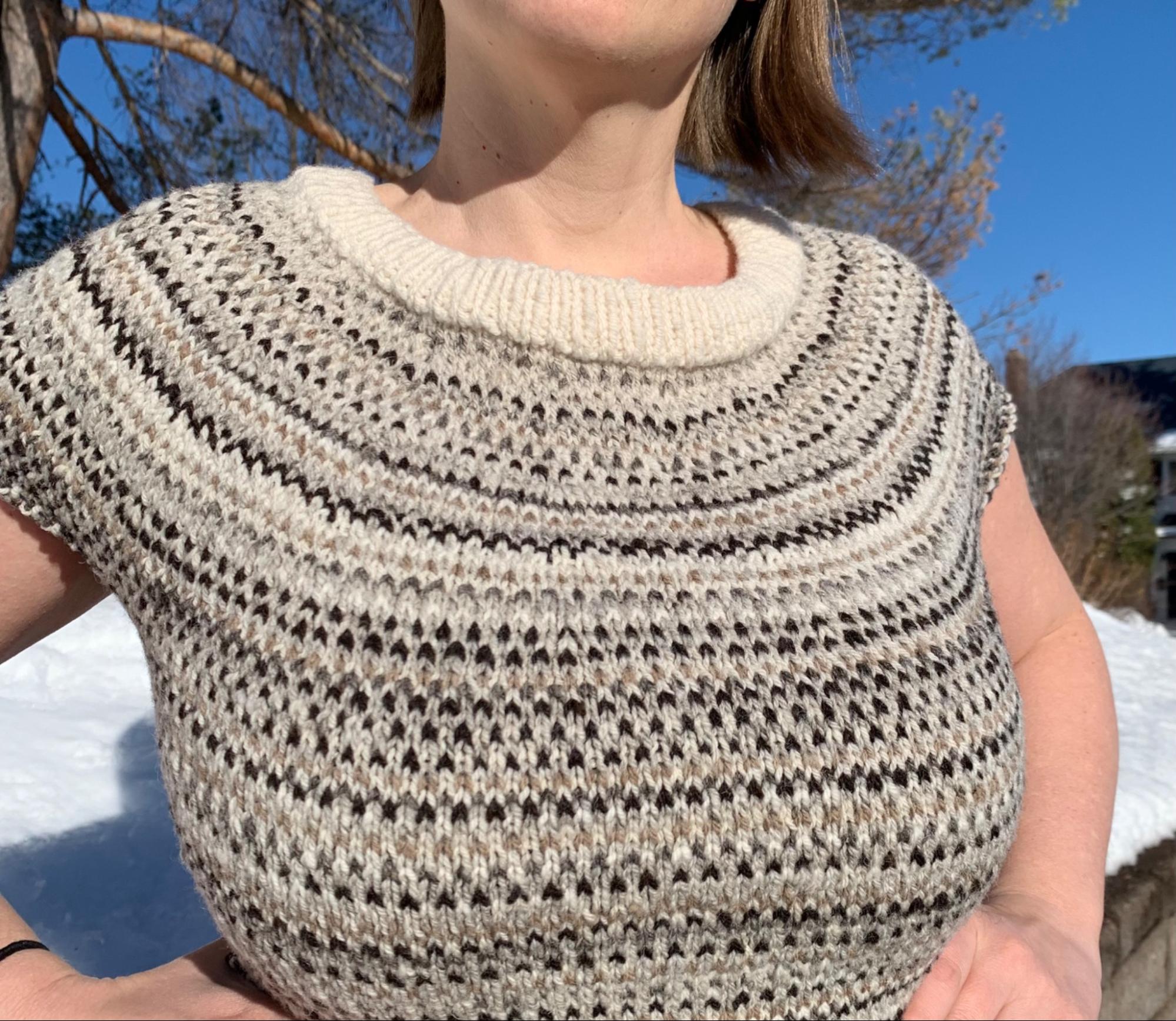 Sheep to Sweater Project, in progress
Sheep to Sweater Project, in progress
I look forward to expanding on that experience by weaving cloth for clothing, based on historical textiles. I am fascinated with the shirts, pants, and cloaks that come from Bronze Age archeological sites, preserved by oxygen-deprived peat bogs or encased in ancient salt mines. The first piece I will make is based on one of these findings. It is woven as a rectangle, a slit cut for a neck hole, two slits to create the sleeves, and wraps around the midsection—an ingenious design for preserving precious material.
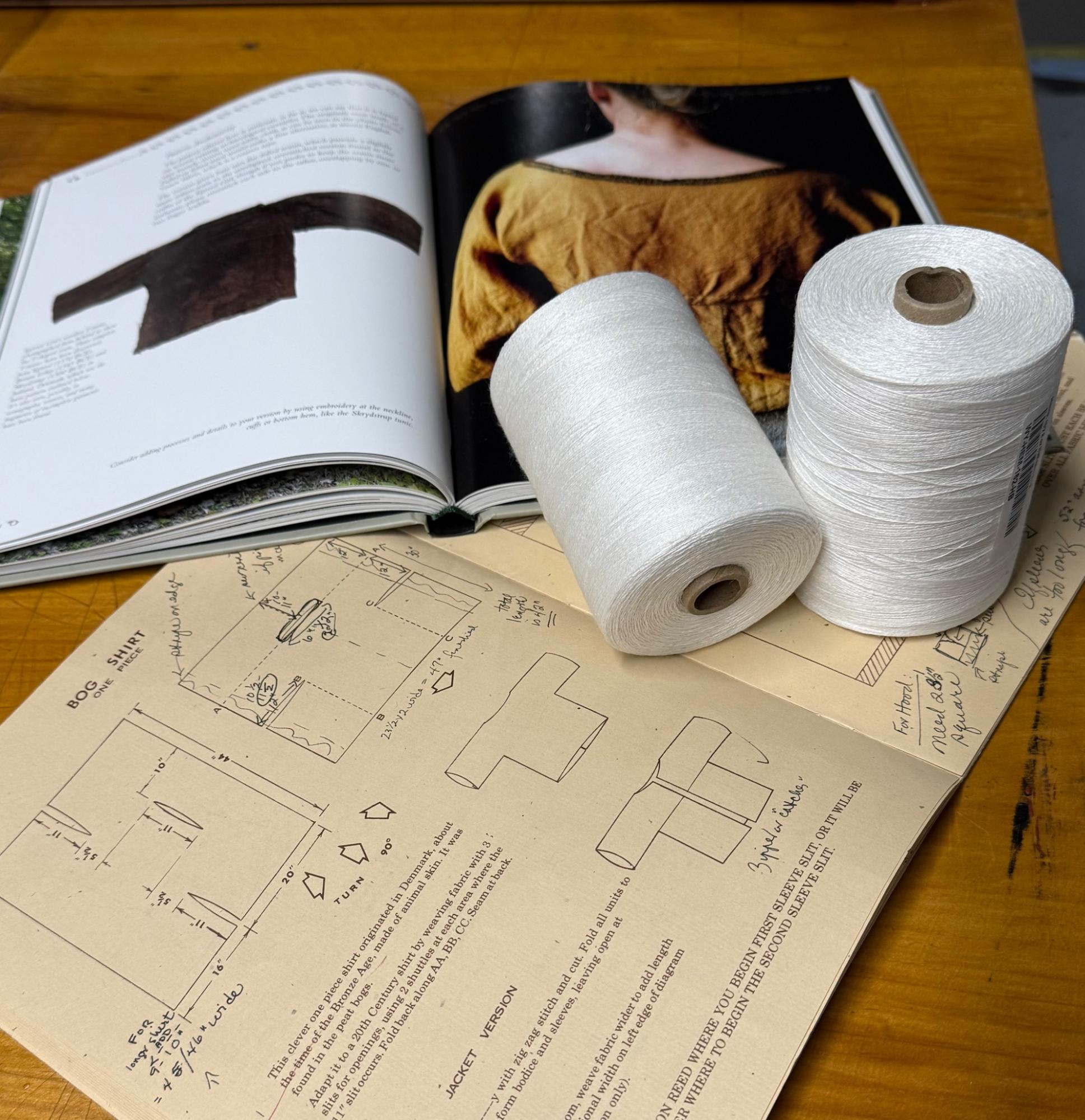
The overarching theme that runs through these areas of interest is connection. In the Slow Fashion sense, connection is my local community; the shepherd, the sheep, the mill owner, the land. In the historical sense, it is my ancestral community; the human struggle, cultural progress, the philosophical meaning. In the environmental sense, it is a knowledge and intimacy with the earth, the gifts from and to the land, the wonder of coexisting in harmony. In many ways, I see these as avenues for us to connect with each other. I also love to teach, to share with others this sense of deep meaning that my teachers have shared with me. I look forward to the year ahead, in this crafty place, creating and connecting.